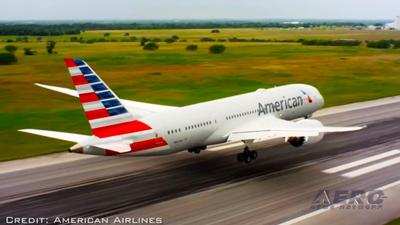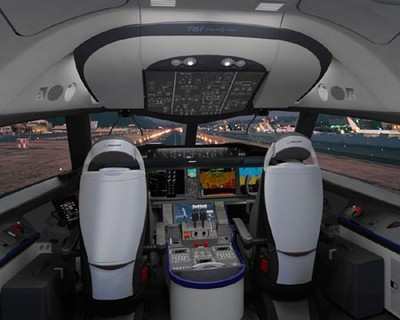“Bulletin,” “Training,” and the Vastness Between
Allied Pilots Association (APA), the labor union by which American Airlines’ 15,000 pilots are represented, has voiced concerns over cockpit procedures recently and ostensibly recklessly implemented by the Fort Worth, Texas-based air-carrier.

The new protocols reportedly pertain to flight-deck call-outs and the coordination of PIC and SIC duties during low-visibility approaches, rejected take-offs, and similarly critical phases of flight.
Such changes are normally implemented only after pilots receive formal, didactic, in-person or virtual training on the new or amended procedures, and pass a test or series of tests evincing comprehension thereof. American Airlines pilots, conversely, received a training bulletin, a short video presentation, and addenda to the AAL Operations Manual. Allied Pilots Association spokesman Captain Dennis Tajer estimated the reading materials comprised one-hundred pages, and alleged the video—a general overview of the new flight-deck protocols—was not specific to the various makes and models of aircraft operated by American Airlines.
In a 09 January 2023 post on the APA website, Captain Tajer remarked: "American Airlines Flight Operations management is attempting to circumvent robust safety-related pilot training by unilaterally imposing operational changes via bulletin. While APA does not oppose fleet harmonization, we are steadfast in our commitment that pilots must be properly trained BEFORE operating with passengers."
The post continued: "This attempt to train by bulletin, while ignoring serious safety concerns and well-established best practices, runs the risk of dramatically eroding margins of safety.”
In an email rebuttal, an American Airlines spokesperson set forth: "Our [AAL’s] commitment to safety is unwavering, which is why we regularly update our Aircraft Operating Manuals to ensure they represent the latest and safest information for our pilots. These changes represent industry best practice and ensure improved crew coordination and consistency across fleet types so that our pilots can easily transition across different aircraft if they choose."

The spokesperson asserted that the changes had been in the works since 2021, and had been devised in collaboration with APA's training committee. The individual stated also that AAL’s “approach to familiarizing” pilots with new procedures had been approved by the Federal Aviation Administration (FAA)—the same FAA that over-hastily–and with poor result–bestowed its approval upon Boeing’s 737 MAX-8 aircraft.
The APA was excluded from the developmental process by which the disputed changes arose; so stated Captain Tajer.
While conceding that self-study is indeed a component of pilot training, Tajer argued: "A reading assignment is not proper flight training.” Tajer added that AAL pilots, who received the materials in early December 2022, had been afforded only one-month to read such—one-twelfth the time they would ordinarily be granted to familiarize themselves with and train on comparatively complex procedural changes.
The Allied Pilots Association unsuccessfully petitioned both AAL management and the FAA to delay the changes’ implementation. “We want this to work,” Captain Tajer averred. "We understand what they're trying to do, but like anything on the flight deck, you've got to get trained."
In an email, the FAA stated: "The FAA requires airlines to have robust safety management systems that enable employees to report safety concerns. The agency reviews those employee reports daily to ensure the safety of an airline’s operations."
The agency—which is charged with reviewing and approving all air-carrier training materials—did not comment on the APA’s request for intervention in the matter.
 Bolen Gives Congress a Rare Thumbs-Up
Bolen Gives Congress a Rare Thumbs-Up The SportPlane Resource Guide RETURNS!!!!
The SportPlane Resource Guide RETURNS!!!! Buying Sprees Continue: Textron eAviation Takes On Amazilia Aerospace
Buying Sprees Continue: Textron eAviation Takes On Amazilia Aerospace Hawker 4000 Bizjets Gain Nav System, Data Link STC
Hawker 4000 Bizjets Gain Nav System, Data Link STC Echodyne Gets BVLOS Waiver for AiRanger Aircraft
Echodyne Gets BVLOS Waiver for AiRanger Aircraft




